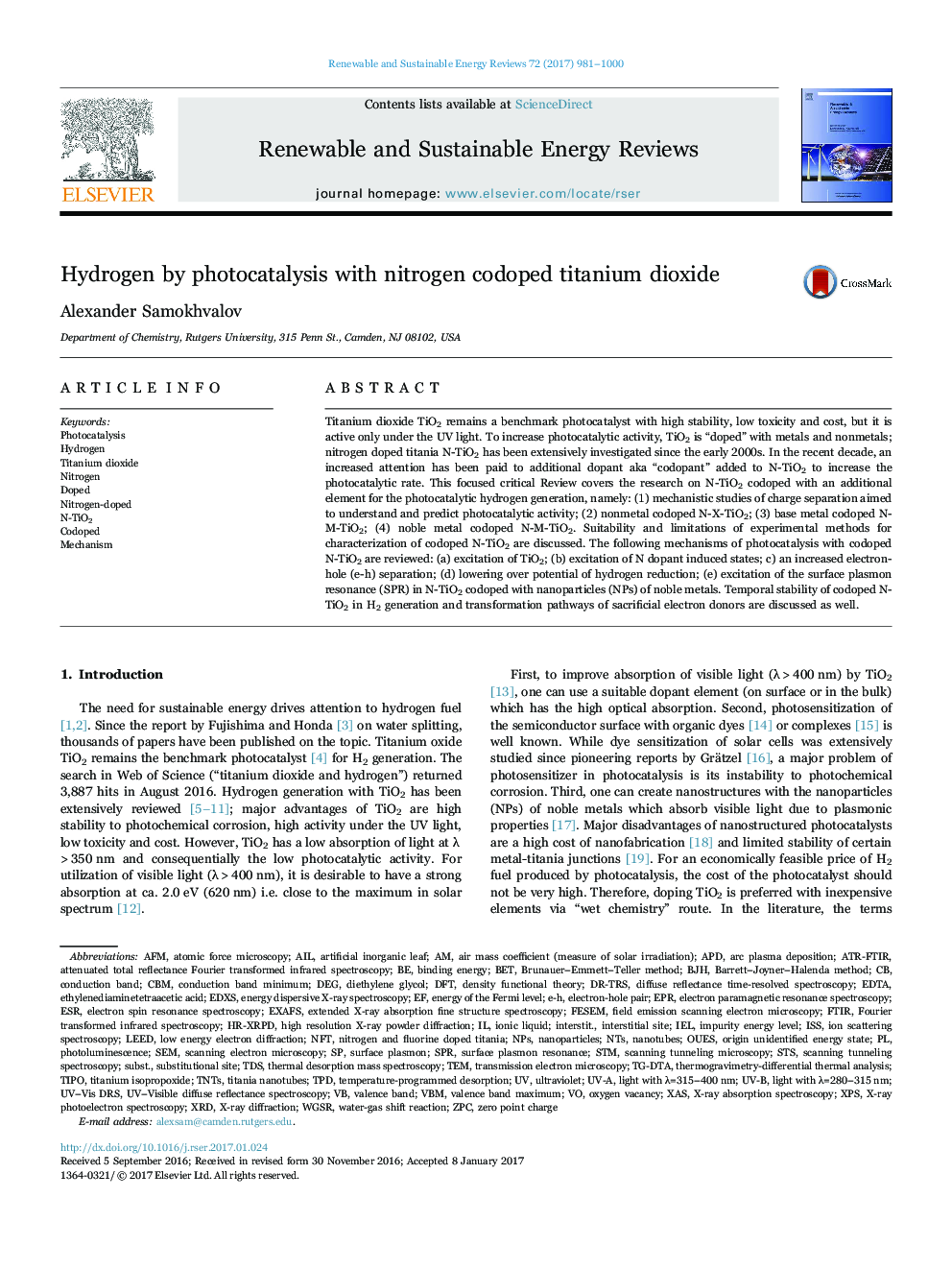| Article ID | Journal | Published Year | Pages | File Type |
|---|---|---|---|---|
| 5482419 | Renewable and Sustainable Energy Reviews | 2017 | 20 Pages |
Abstract
Titanium dioxide TiO2 remains a benchmark photocatalyst with high stability, low toxicity and cost, but it is active only under the UV light. To increase photocatalytic activity, TiO2 is “doped” with metals and nonmetals; nitrogen doped titania N-TiO2 has been extensively investigated since the early 2000s. In the recent decade, an increased attention has been paid to additional dopant aka “codopant” added to N-TiO2 to increase the photocatalytic rate. This focused critical Review covers the research on N-TiO2 codoped with an additional element for the photocatalytic hydrogen generation, namely: (1) mechanistic studies of charge separation aimed to understand and predict photocatalytic activity; (2) nonmetal codoped N-X-TiO2; (3) base metal codoped N-M-TiO2; (4) noble metal codoped N-M-TiO2. Suitability and limitations of experimental methods for characterization of codoped N-TiO2 are discussed. The following mechanisms of photocatalysis with codoped N-TiO2 are reviewed: (a) excitation of TiO2; (b) excitation of N dopant induced states; c) an increased electron-hole (e-h) separation; (d) lowering over potential of hydrogen reduction; (e) excitation of the surface plasmon resonance (SPR) in N-TiO2 codoped with nanoparticles (NPs) of noble metals. Temporal stability of codoped N-TiO2 in H2 generation and transformation pathways of sacrificial electron donors are discussed as well.
Keywords
VBMCBMTDSdopedIELUV-AATR-FTIRTPDSTSUV–Vis DRSSTMUV-BEDXSISSn-TiO2AFMNTSTNTsNFTAPDLEEDAILZPCTG-DTAWGSRZero point chargeValence band maximumConduction band minimumBrunauer–Emmett–Teller methodBJHEXAFSESRFESEMCodopedDFTXASNPsEDTAEthylenediaminetetraacetic acidUltravioletEnergy Dispersive X-ray SpectroscopyBinding energytitanium isopropoxideTemconduction bandEPRSPRSurface plasmon resonanceoxygen vacancyTemperature-programmed desorptionOUESElectron-hole pairTitanium dioxidediethylene glycolArc plasma depositionInterstitial siteBETDEGFTIRElectron spin resonance spectroscopyScanning tunneling spectroscopyX-ray absorption spectroscopyelectron paramagnetic resonance spectroscopyExtended X-ray absorption fine structure spectroscopyX-ray photoelectron spectroscopyIon scattering spectroscopyXPSPhotoluminescencePhotocatalysisFourier transformed infrared spectroscopyIonic liquidSEMMechanismScanning electron microscopyTransmission electron microscopyField emission scanning electron microscopyScanning tunneling microscopyatomic force microscopyNanoparticlesNanotubesTitania nanotubesDensity functional theoryNitrogennitrogen-dopedHydrogenWater-gas shift reactionXRDX-ray diffractionLow energy electron diffractionsurface plasmonvalence band
Related Topics
Physical Sciences and Engineering
Energy
Renewable Energy, Sustainability and the Environment
Authors
Alexander Samokhvalov,
